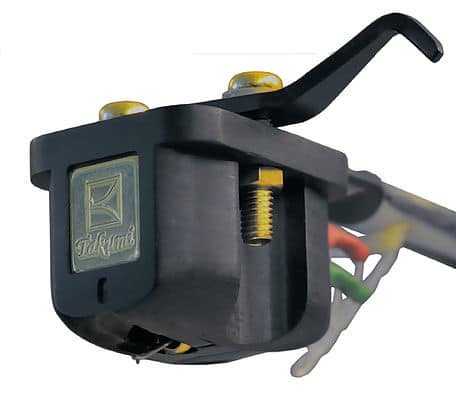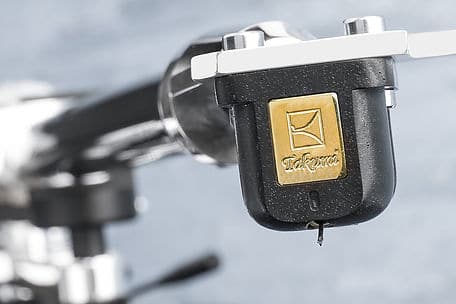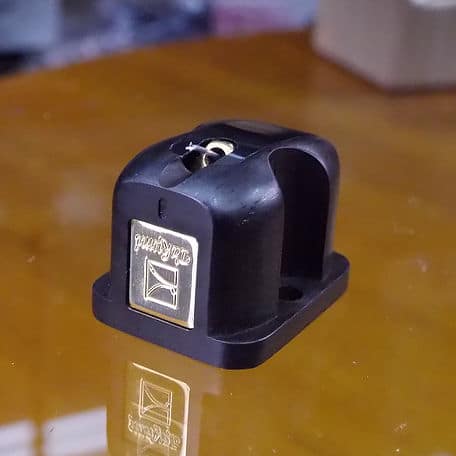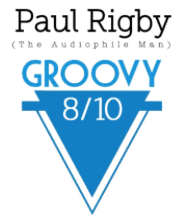The Article
THE BLACKWOOD BOOGIE
3rd March 2016

Positioned as the ‘entry point’ on its stereo cartridge menu, Paul Rigby reviews Miyajima’s own Takumi
To this point, the only experience I’ve had of the Japanese specialist cartridge maker, Miyajima, is via its mono cartridges. Life becomes rather more competitive and hectic in the world of stereo, though. Would Miyajima reveal itself to be only a one-trick mono pony?
Up for review here is the Takumi which is made from African Blackwood, also known as Mpingo: the black wood that is used to make clarinets and oboes. Featuring a forgiving elliptical stylus, the chassis weighs in at a relatively light 9g. To put that into perspective, my Koetsu Black reference arrives at a relatively hulking 11g. That said, the Takumi has a higher recommended tracking weight of 2.25g as opposed to the Black’s 1.9g.
Featuring the company’s own ’cross ring’ motor assembly, I hooked it onto my Avid Acutus and reached for a copy of the new half-speed, exquisitely mastered A Night At The Opera Queen album and played The Prophet’s Song.
SOUND QUALITY
The effect of the Miyajima was immediately apparent from the first few plucked strings. There was an almost silky smoothness from the midrange. I am used to hearing a goodly amount of air and space from my reference system but the air generated by the Takumi, not just around the track but actually in and around each instrument, was truly impressive. One good example of that was Brian May’s subtle electric guitar noises which not only emerged from the mix as an individual instrument for the first time but showed a tremendous amount of texture and vitality.
That smoothness in the upper mids continued through the vocals and the harmonic interplay during the mid part of the track. Air left mouths so calmly and evenly that the crucial harmonic joining, the part of the harmony when multiple voices become ‘as one’, could only be described as joyous.
More surprising, at least to my ears, was how the Miyajima treated percussion. The drums were opened up and, because of that, a multiple drum strike sequence became rousing and stirring.
I turned to the orchestral sounds of El Varon Rebuscante from composer, conductor and arranger Gianni Ferrio. The melancholy, classical-oriented strings of the track, Una Declaracion de Amor can sometimes be slightly shouty while the banks of strings during extreme crescendos can be prone to barking but the Miyajima managed to not only smooth those sharp upper edges but showed both detail and incisiveness within the upper mids while the accompanying oboe had a reedy, textural nature that infused its performance with emotion.
Again, percussion was well favoured by the Miyajima. Mainly exhibited via secondary instruments, these frequencies were favoured with enough air and space to provide a sense of clarity and fragility.
When the banks of strings heaved into view, the effect was initially quite romantic as the sweeping effect was emotionally teasing but there was more to this section of the track than just musicality, even though that effect was inordinately welcome. The brain was also stimulated by the instrumental separation even within this so-called solid wall of violins, as each instrument exhibited its own personality and character.
Moving to jazz, Sarah Vaughan’s album, Sassy Swings Again, and the track Sweet Georgia Brown the Takumi not only presented an impressive soundstage but organised the same. It’s almost as if the cartridge picked up the instruments and said, “Well, look, this is how I’d order the soundstage.” During play the soundstage sounded relaxed, sympathetic, spacious and offered a sense of efficiency, allowing you to hear each and every member of the backing band.
There is no sense of stridency – which this master can slip into – within the midrange, vocals were articulate without being bright (again, there is a tendency with other cartridges) while the bass was remarkably prominent, lending the entire track a new foundational grounding.
CONCLUSION
One of the most sensible (in terms of doing the ‘right’ thing in terms of that soundstage organisation), fluent, eloquent and smooth cartridges I’ve heard for a very long time, the Miyajima Takumi doesn’t emphasise or spotlight any one frequency band. There is no colouring here. The Takumi, instead, spends most of its time opening up the mix and the instruments within to provide a greater transparency and clarity over the entire frequency spectrum. A future classic? Nah. Why wait?
MIYAJIMA TAKUMI
Price: £1,295
Tel: 01803 833366
Website: www.soundhifi.com
Good: frictionless mids, open and spacious soundstage, detailed low frequencies, delicate treble
Bad: nothing
RATING: 8
SYSTEM USED
Avid Acutus turntable
SME IV arm
Koetsu Black cartridge
Icon Audio PS3 phonostage
Aesthetix Calypso pre-amp
Icon Audio MB 845 Mk.II monoblocks
Quad ESL-57 speakers with One Thing mods
Vertex AQ & Atlas cabling





